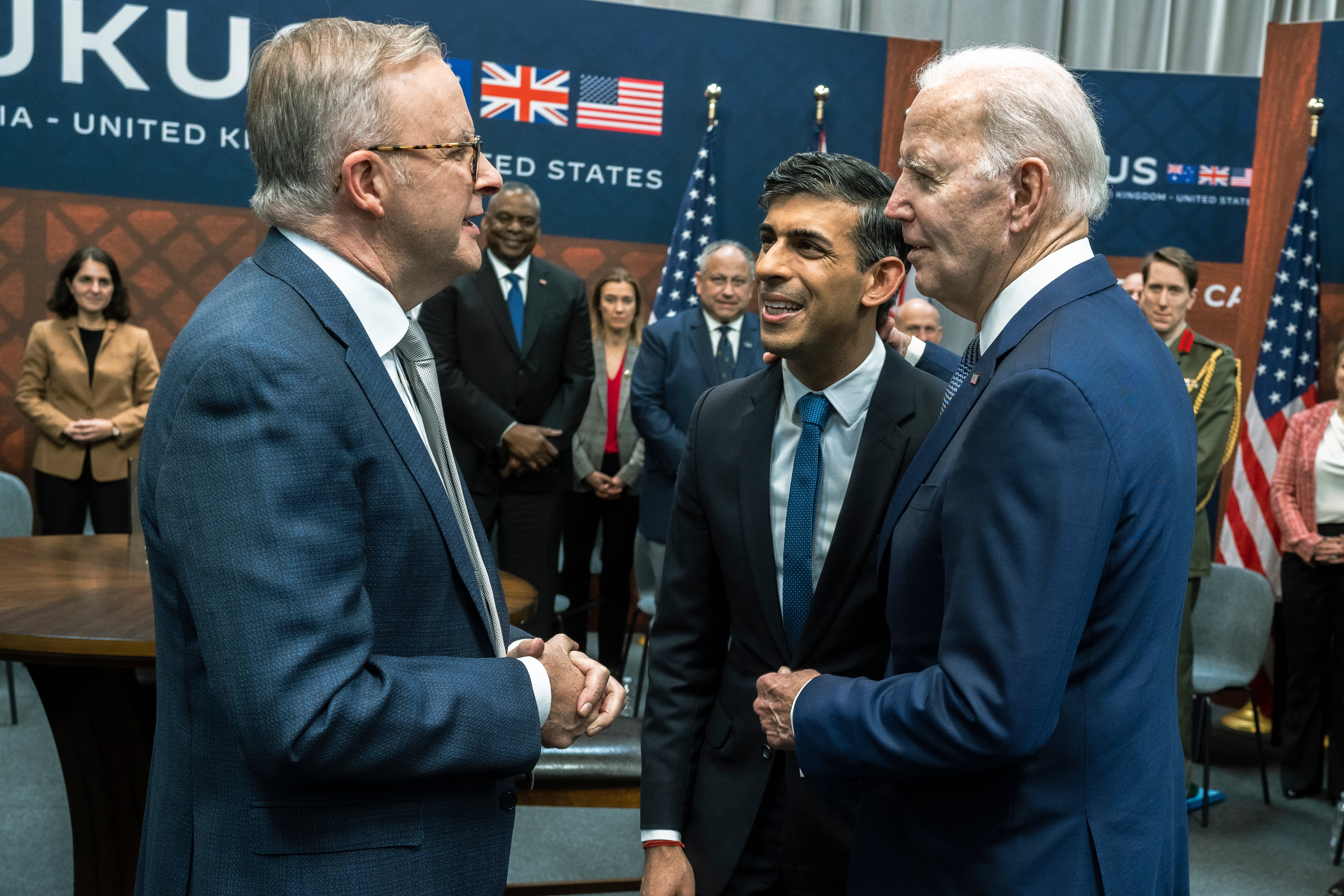ARLINGTON, Va. — The U.S. Navy intends to sell Australia used Virginia-class attack submarines in 2032 and 2035, plus a new boat in 2038, leaders said.
This timeline provides a more detailed breakdown of the submarine-sharing arrangement between the United States, Australia and the United Kingdom announced in March.
Those three countries, which are signatories to the trilateral security agreement AUKUS, are working to familiarize Australian sailors as well as the shipbuilding and ship repair workforce with nuclear submarines. As training efforts in the U.S. and Australia ramp up, the partners should be ready to declare Australia “sovereign ready” by the early 2030s, Capt. Lincoln Reifsteck, the AUKUS integration and acquisition program manager, said last week at the Naval Submarine League’s annual symposium.
Assuming that designation is met on time, Australia will start building its inventory of nuclear-powered submarines almost immediately.
In 2032 and 2035, the U.S. will sell in-service Block IV submarines, Reifsteck said, which are currently under construction. The first Block IV boat was commissioned in 2020, and the final will likely commission around 2026, meaning Australia would receive submarines with between six and 15 years’ worth of use. Virginia-class subs are designed to have 33 years of service life.
The Navy will also sell a new Block VII boat to Australia in 2038. After 10 years of buying submarines with an extra Virginia Payload Module built into the middle to add more missile tubes, the Navy will return to the original Virginia-class length with Block VII, set to begin construction in fiscal 2029.
In parallel, the U.K. and Australia will build a new SSN-AUKUS submarine that both fleets will operate. Australia is to receive Britain’s first SSN-AUKUS in the late 2030s and its first domestically built sub in the early 2040s, according to a slide Reifsteck showed at the symposium. This timeline would allow Australia’s submarine fleet to continue to expand following the sales of the Virginia boats.
While speaking with reporters, Royal Australian Navy Commodore Bradley Francis, who serves as the country’s AUKUS program lead, said the government has selected a company to build the submarine construction yard but had not yet selected a shipbuilder who will work there to build the SSN-AUKUS. That selection will come in the next year, he added.
The allies do have a contingency plan in case the SSN-AUKUS design, construction and test plans fall behind schedule, Reifsteck noted: The U.S. Navy could sell a fourth or fifth Virginia-class submarine to Australia as part of an agreement approved by President Joe Biden and Defense Secretary Lloyd Austin.

The captain told Defense News after his presentation that “three is definitely the desire; that is the plan,” but the contingency to include additional submarines is important because it asks the U.S. Navy to ensure it has enough margin in its own plans to sell the extra boats if required.
Asked what events might invoke the alliance to pursue the additional sales, Reifsteck said it could be a scheduling issue or any unforeseen factors, citing a pandemic or crisis that “causes dramatic changes” to people, infrastructure, industry and regulations.
The goal, he added, is to reach a point where the AUKUS partners can conduct integrated patrols in the Pacific to ensure regional stability.
Reifsteck also noted negotiations are ongoing between the U.S. and Australia over the latter’s support for the former’s submarine-industrial base. Though some officials have suggested Australia might spend $3 billion on that American sector, Reifsteck said the exact amount and the timing are still in discussion.
“I do expect a substantial, proportional investment,” he said.
Megan Eckstein is the naval warfare reporter at Defense News. She has covered military news since 2009, with a focus on U.S. Navy and Marine Corps operations, acquisition programs and budgets. She has reported from four geographic fleets and is happiest when she’s filing stories from a ship. Megan is a University of Maryland alumna.





